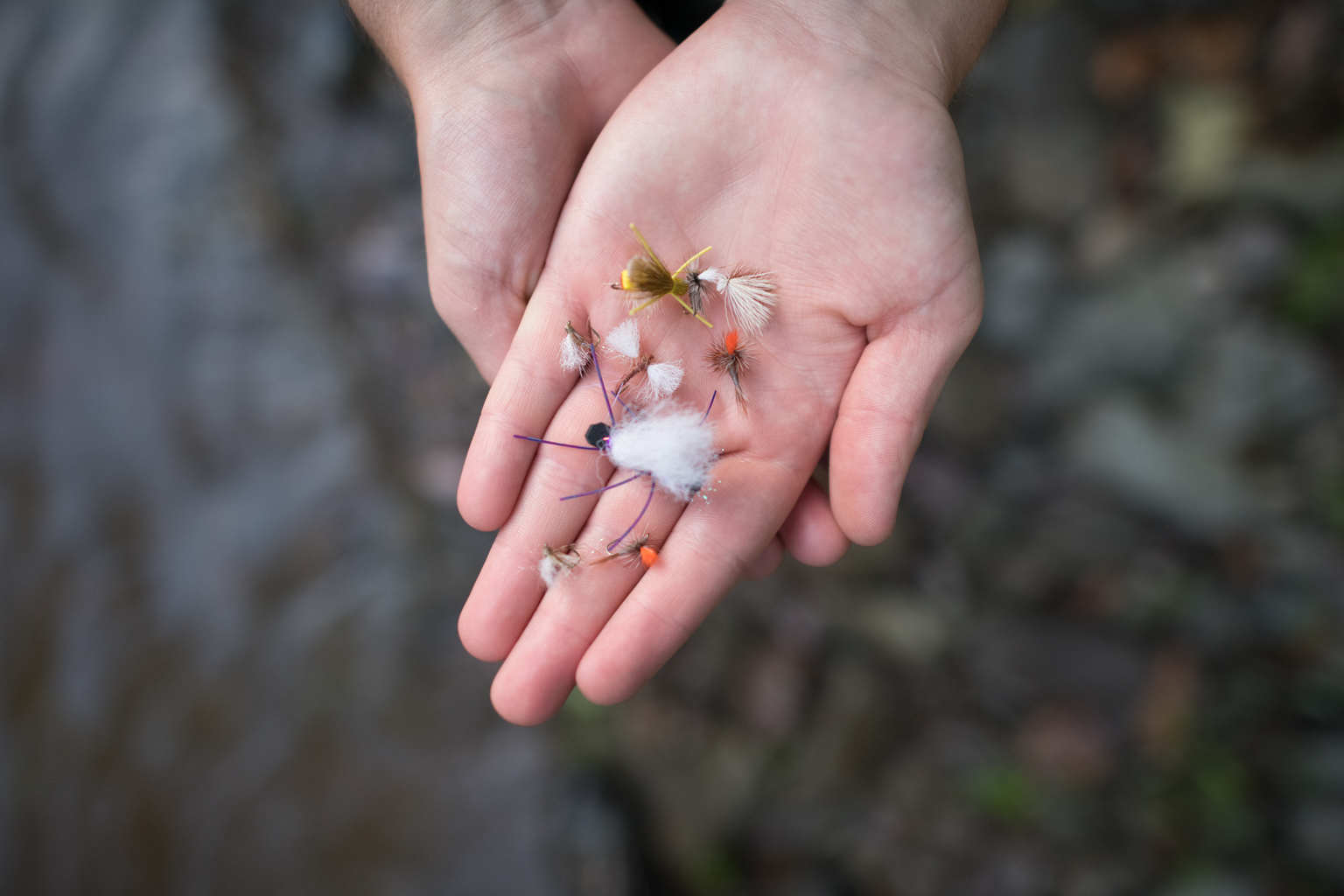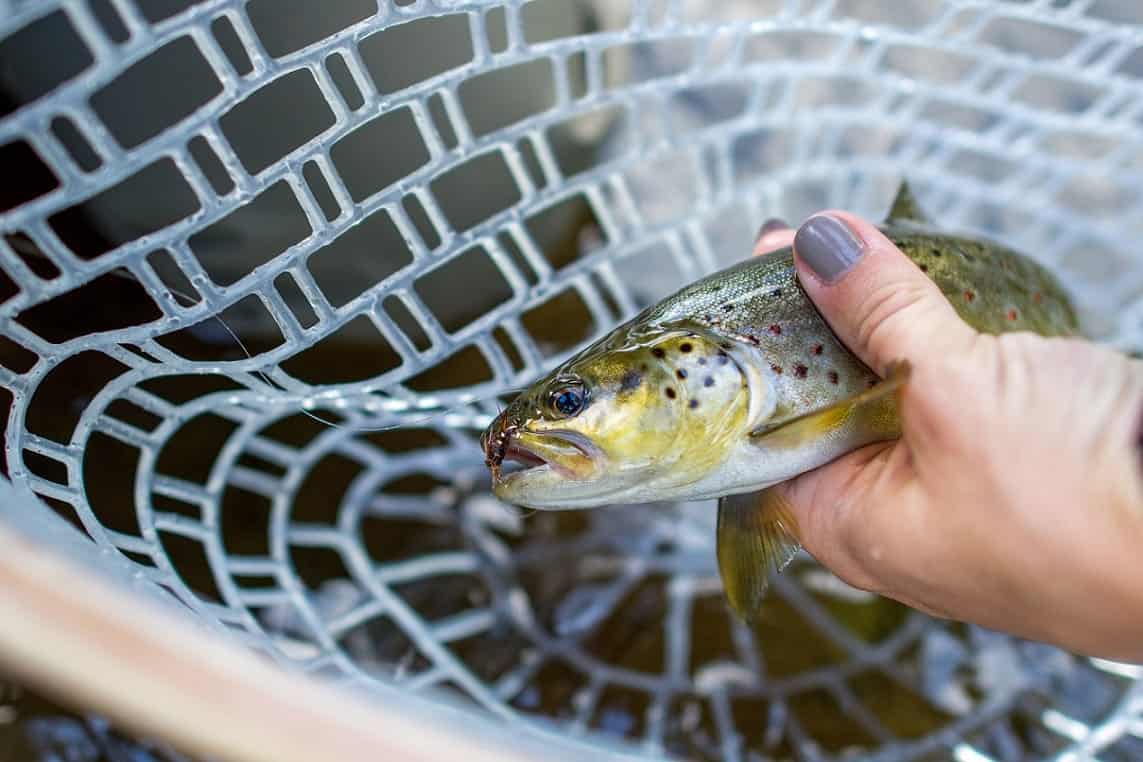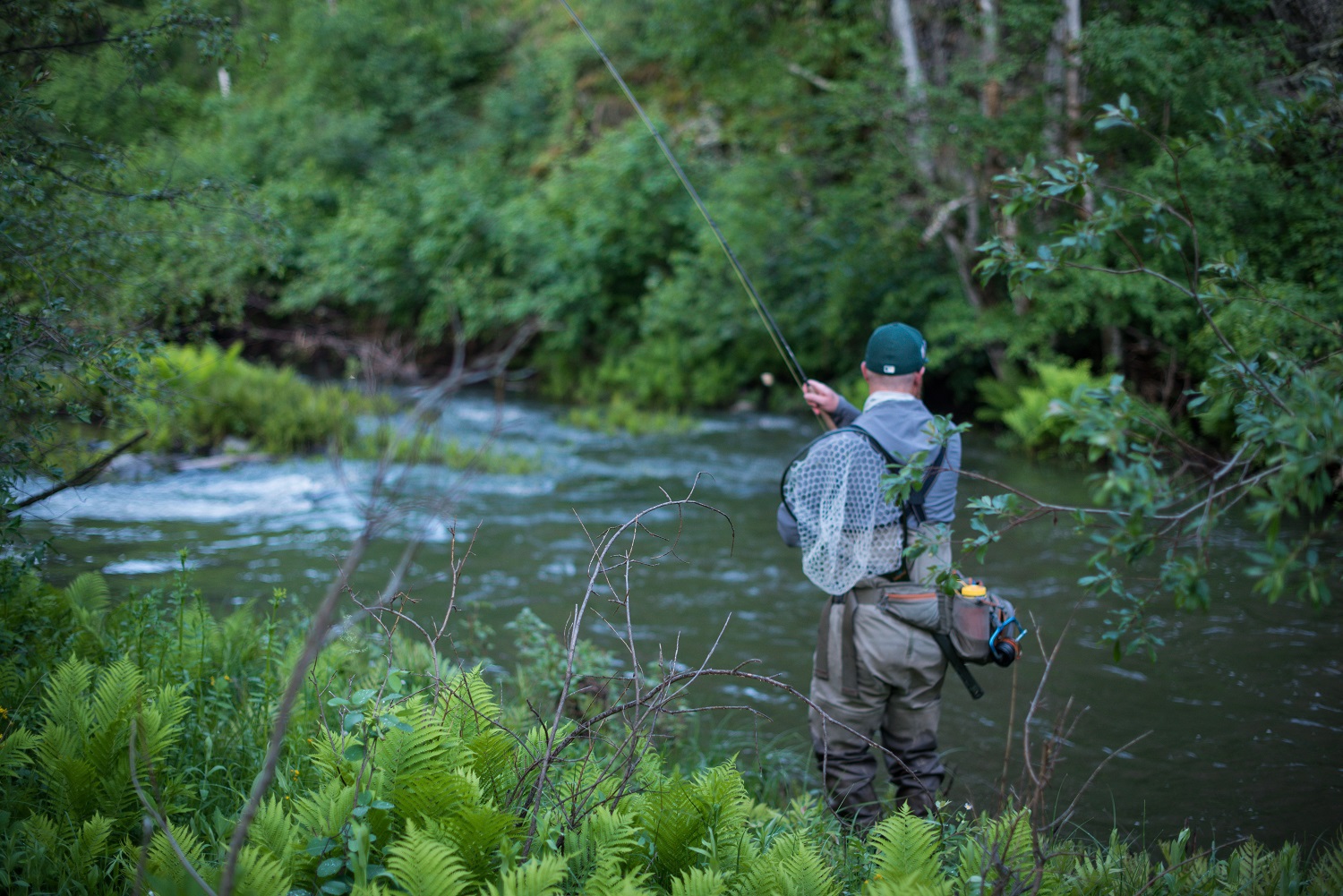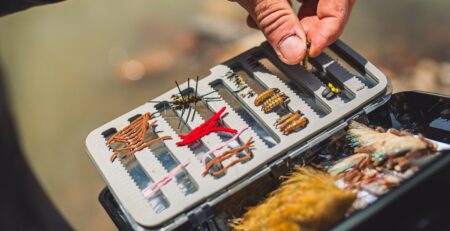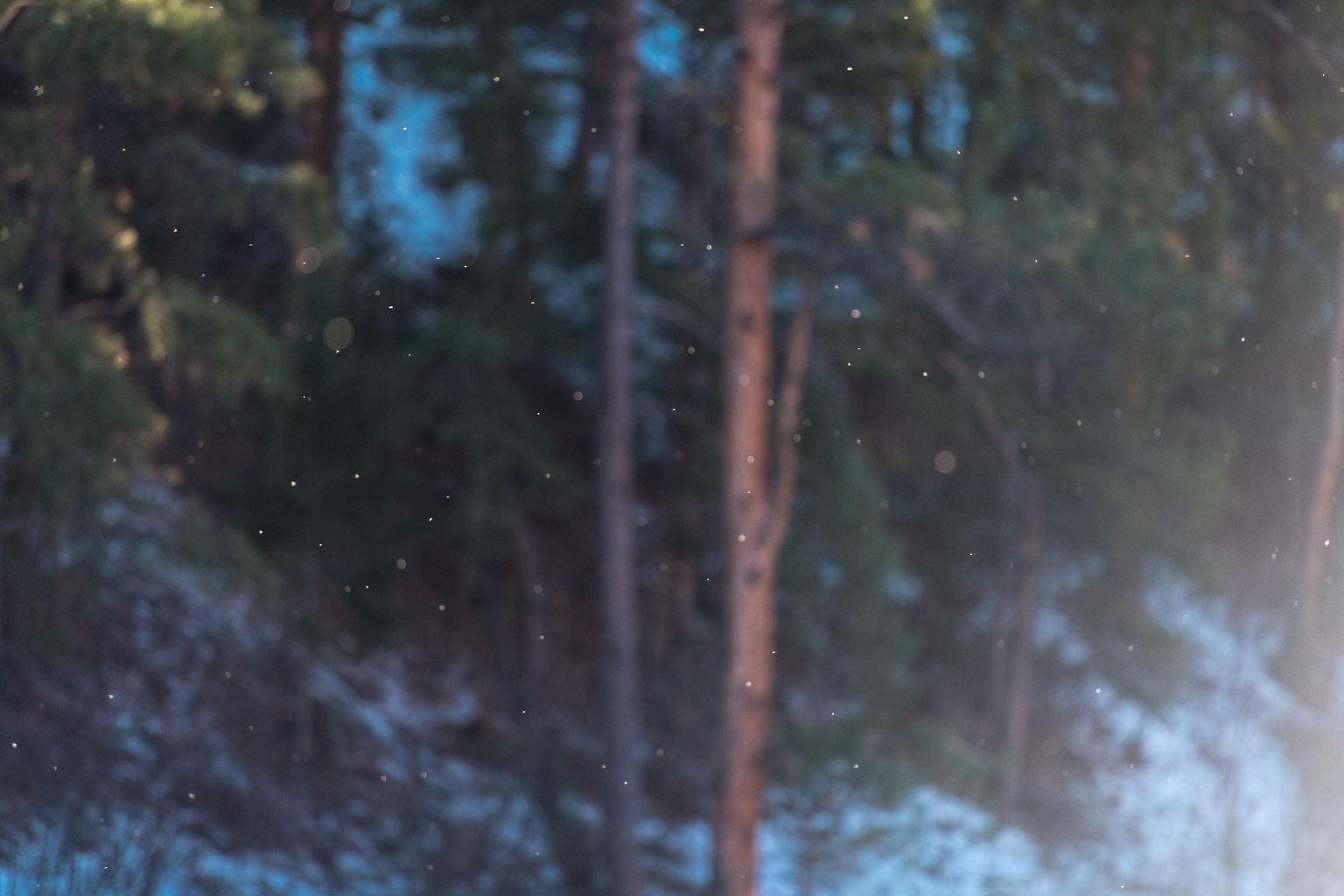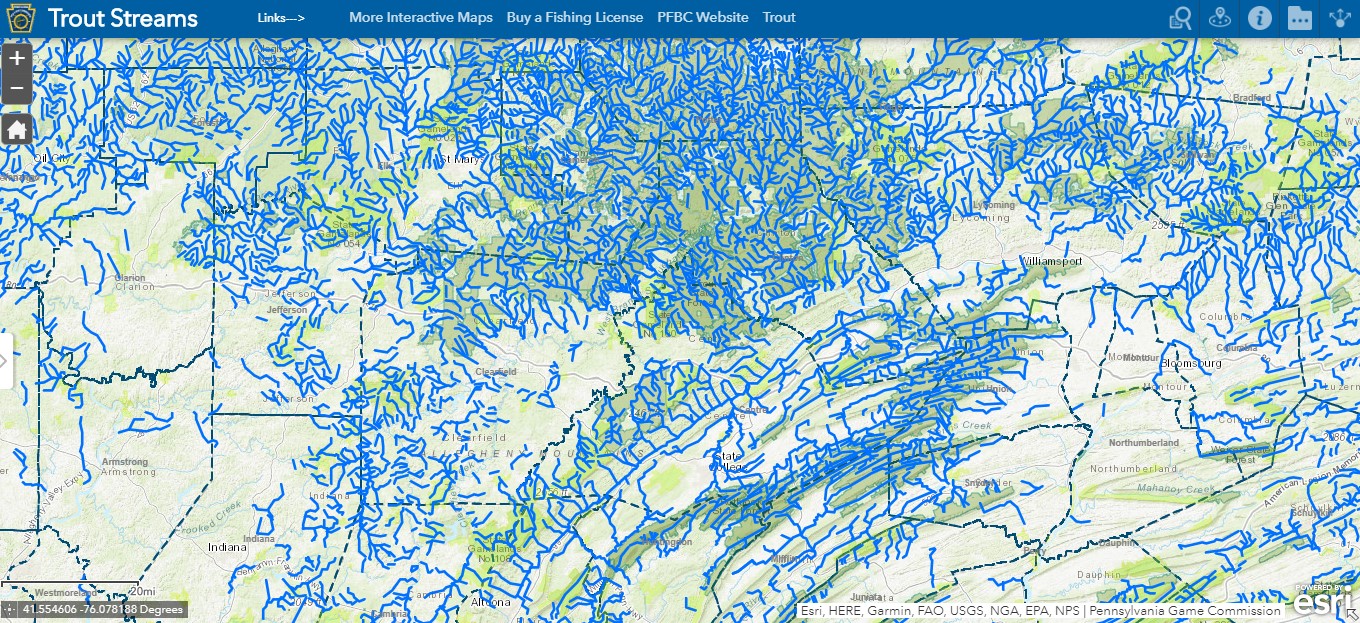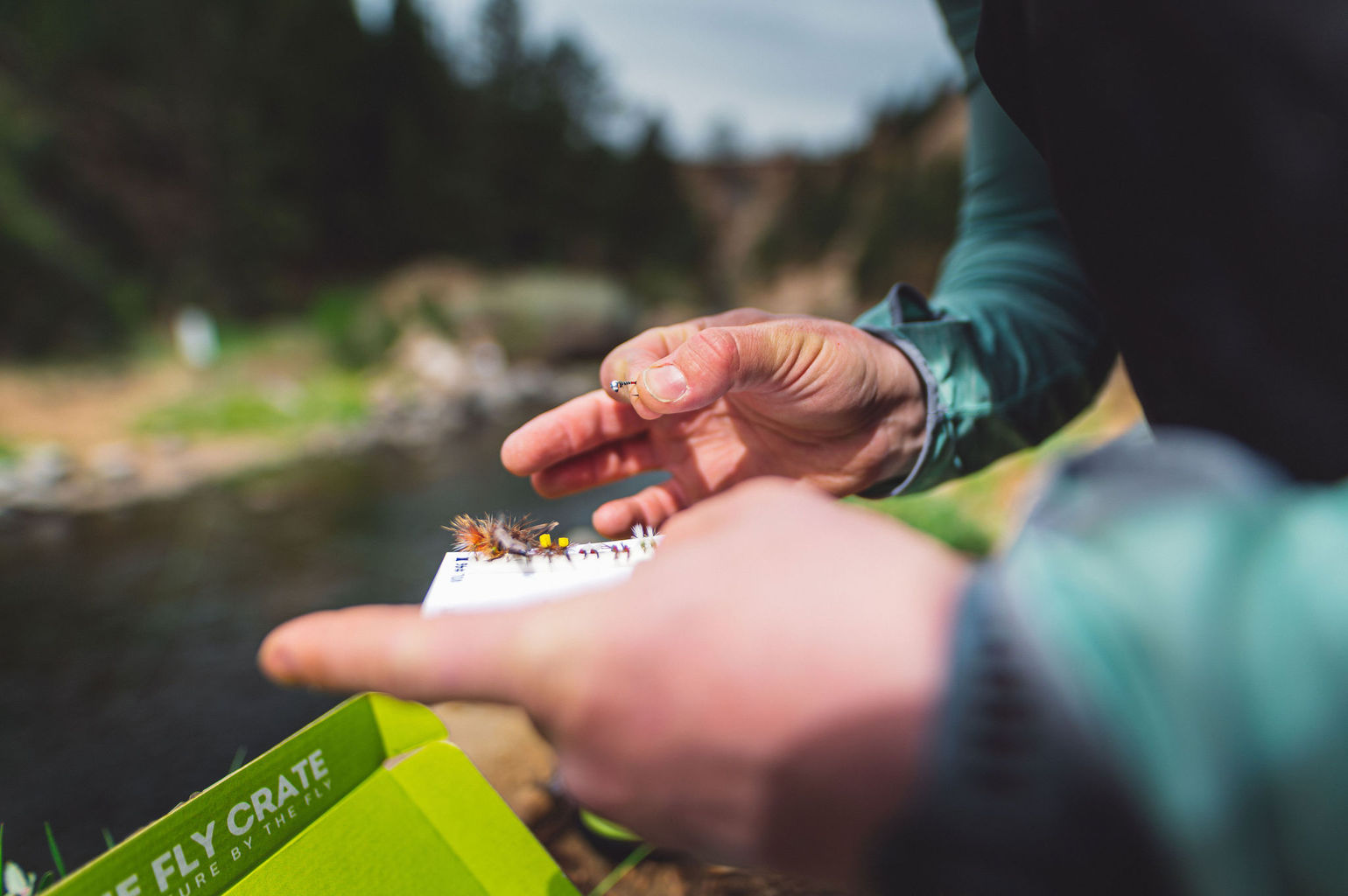How to Fly Fish With Dry Flies For Trout
Dry fly fishing is an addicting aspect of trout fishing. It’s hard not to argue the visual appeal it has with the explosive takes which makes it a blast! Getting to that point where the faint fishy silhouette emerges and your dry fly disappears into the mouth of trout requires a lot of practice controlling your dry fly presentation.
Let’s take a look at the basics to dry fly fishing and how to limit drag, when to cast, when to use emerger flies, where to cast, and our favorite dry fly patterns we’d recommend you try.
Selecting The Right Dry Fly Pattern
There are a countless number of dry fly patterns out there for nearly every conceivable situation. While having a good presentation is more important that the perfect pattern, it still doesn’t hurt to match the hatch.
Selecting the right dry fly can be broken down 3 steps for a near-perfect match.
Step 1: Shape
Imitate what you find around the stream. Look in the brush, grass, under leaves, etc. to find flying insects. Are their any fishing rising? If so, get down close and observe the surface of the water for small insects drifting by.
Afterward, go through your fly box and find a fly pattern that would represent the shape or silhouette of the insect.
Step 2: Size
This does not need to be an exact science, but the closer you are to imitating the natural size of the insects hatching, the more likely you may deceive a tricky trout.
The general size is a great place to start, but in large hatches, sometimes variety proves essential. In some cases, when matching the hatch perfectly, the volume of flies passing the target fish doesn’t place your imitation as a high priority.
In this case, increasing or decreasing the size of the fly will give the fish a different perspective towards your fur and feathers, increasing your odds.
Step 3: Color
After selecting the shape and size appropriate in matching the naturals swarming around you, the last factor in matching the hatch is the shade of the fly.
The term shade, in this case, refers to the overall color scheme of the fly.
This again does not need to be exact. If the naturals are tan, then choose a tan pattern. If the naturals are black, then choose a dark pattern. This, coupled with the other two prerequisite factors discussed prior will generally deliver on most streams.
Fly Fishing Made Easy 👍
Our Quarterly Fly Club ships 1,000’s of flies to anglers all across the United States. Receive curated fly assortments selected for the season with in-depth articles on how to fish them. Great for beginners to learn and for intermediates to discover new flies.
When To Fish Emergers
When hatches start to go full swing, trout will often target the emerging insects. You’ll notice trout rising with a splash or just breaching the surface.
- Rise with a splash: Fish are chasing swimming emergers that are racing to the surface.
- Breaching the surface: Taking emergers that are attempting to or have broken through the surface film.
- Water disturbance but no breaching: Fish are eating nymphs that are making their way to the surface.
Once this occurs, trout will rarely deviate from eating emergers, which will make it extremely difficult to catch anything without an emerger pattern.
Emerger patterns are typically quite lite — and are designed that way for many reasons:
- Hang just in the surface film — insects (dead or alive) gather within this thin water column.
- Drift naturally with the current — emerging insects typically drift aimlessly in the water column with the current as they take to the surface. A lite fly will do the same.
The Upstream Cast

An upstream cast is making a cast directly up into the current when you are downstream of your target. This will allow the current to drift your fly back towards you. For new fly anglers this is one of the most simple casts to perfect because slack naturally builds in your fly line as it floats downstream.
After your cast immediately begin to retrieve the slack line so you have enough line tenison to immediately set the hook if a fish strikes.
This particular cast is a wonderful way to sneak up on trout from behind. It’s best to cast from an angle to allow only your fly to be the first thing the trout sees. It’s best to avoid having your line cast directly over of the trout which often leads to scaring them. You can prevent this by casting at an angle upstream with just enough line out that no line overlaps the fish.
The Downstream Cast

On the reverse side, we have the downstream cast which can be the only suitable fishing option for some pools of water that are difficult to access from below or off to the sides. The downstream cast is made well above your target so that the water carries your fly right to the fish. We love this cast because it is an easy way to ensure the fly is the first thing the trout sees rather than the line.
When you make the downstream cast, you want to allow some slack to form on the water. You can add slack with two different methods, 1. feeding line through your guides as the water pulls it or 2. a pile cast.
Option number one is quite simple. Pull some line off your reel and make a short cast downstream. As the current begins to pull your line away from you slowly let that extra line you pulled off slide through your fingers and down your rod guides. Keep control over how much slack you let out so you can be ready for if a fish strikes your dry fly.
To perform a pile cast aim your cast high in the air like you’re casting to the treetops and stop your follow-through short so the line recoils back towards you and floats onto the water. This should create enough slack on the water for a dead drift.
The Cross Stream Cast

Here is where things can get tricky. When you cast across the stream your line begins to flow with all the multiple different currents that are present at the water’s surface. All of this pushing and pulling on the line drags your dry fly all over the place like a rag doll, which makes it difficult to maintain a natural dead drift with your fly.
Cross stream casts will require you to actively mend your fly line either downstream or upstream to minimize drag.
Mending is, in its simplest form, the act of adjusting your fly so that it drafts through the water in a natural way. You make little adjustments to your line and fly that help it look more natural in the water. That means that your fly isn’t being pulled through the water by your fly line or skating across the water (unless you want it to do that).
Mending: Mending is the act of using your rod to pick up and reposition your line against the current the current to perfectly present your flies with minimal drag.
To do a basic mend, all you’re really doing is lifting up your rod (and your fly line) and moving the line upriver (or downriver, we’ll get to that), in order to eliminate drag.
This is a snippet of our article on how to mend your fly line. Click here to read more about mending.
Our 10 Favorite Dry Flies For Trout

Adams Parachute
The Adams Parachute Dry Fly is one pattern that deserves to be in every fly box. Parachute’s make it easy to see in rough water and abundant hatches with it’s highly visible post. It can imitate nearly everything from caddis to midges and almost every stage of mayfly.

Elk Hair Caddis
Elk Hair fly patterns imitate the bread and butter of a trout’s diet, caddis. As one of the greatest patterns ever created, even the most selective trout can’t resist. Overall, its insect profile and ability to float high gives the Elk Hair fly credibility as a go-to pattern for nearly every serious angler.

Stimulator
Late April thru October, Stimulators are the key to a trout’s heart. Imitating not only stoneflies but also adult caddis and hoppers, Stimulators are the fine cuisine of attractor flies. We love to use this bulky fly in a dry dropper fly rig with a nymph dropped below. Never be caught with your pants down without a handful of Stimulators.

Chubby Chernobyl
One of the best-known stonefly and hopper patterns that comes in loads of colors for high visibility. It is great for hopper-dropper rigs and takes high-fast water easily. It is also a wonderful dry dropper fly because of its dense foam body.

Blue-Winged Olive Parachute
Blue Wing Olives or BWO’s or Baetis, whichever name it goes by, are one of the most important hatches. Parachute’s make it easy to see in rough water and abundant hatches with its highly visible post. Pair this with the common Blue Winged Olive for a macho combo. When it comes to selective trout, it helps to have a few versions of the Baetis pattern.

Klinkhammer
This fly imitates all sorts of mayfly, caddis, and midge lifecycles. Because the Klinkhammer is so versatile this pattern is perfect for small streams. Start by using this as a searching pattern by targeting seams, slow runs, and pocket water. Don’t be afraid to drop a small nymph off the back. You can even sink it and fish it with your favorite nymphs. Seriously, it works.

Royal Wulff
Known to many as a “fish locator”, the Royal Wulff is perfect for scoping out fish when you can’t see them. With a rooster-ton of hackle, this buggie fly can easily be fished in fast moving water. When we take trips to small brook trout filled streams in the mountains we take preference to this fly for its easy visibility and buoyancy.

Hi-Viz Para Ant
A parachute style ant with a Hi-Viz para-post for high visibility in rough water. Perfect for little streams and riffles under overhanging branches and undercut banks.

Skerik’s Shuck ‘N’ Jive Midge
An excellent adult midge pattern for streams, rivers, and stillwater fisheries. Typically, you’ll find swarms of these guys over slack water. Be sure to use a light tippet and target the slow-moving water following a pool.

MH CDC BWO Emerger
A CDC blue-winged olive emerger that sits just within the surface film for when trout selectively take nymphs and emergers. Fish this at the top of a nymphing rig or by itself by targeting bubbly seams.

